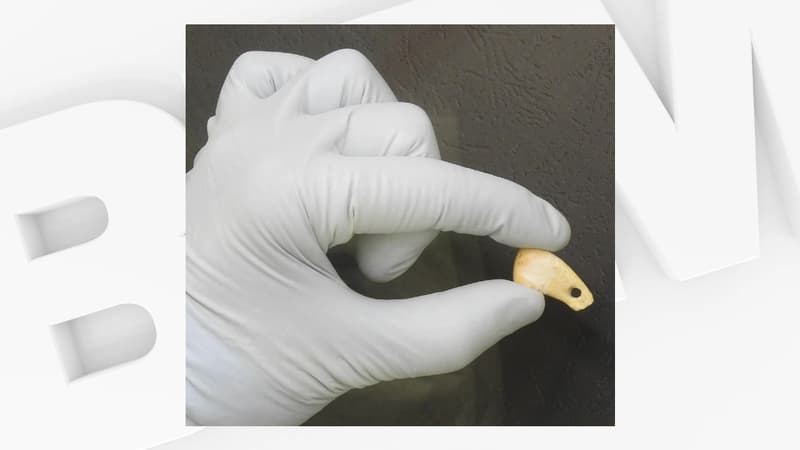Traces of sweat on a pendant carved from a deer tooth thousands of years ago have allowed it to be dated and to know a little more about the owner of the jewel, thanks to a new DNA extraction technique. She was a woman some 20,000 years ago, details a study published this week in the scientific journal Nature.
“Objects made of stones, bones and teeth are essential for understanding human subsistence strategies, behavior and culture in the Pleistocene”, more than 12,000 years ago, recalls the study carried out by researchers from the Max Planck Institute for Evolutionary Anthropology in Germany.
There are a large number of such objects, but it is difficult to associate them with any particular individual, unless they are discovered in a tomb, which is quite rare. Max Planck’s team overcame the difficulty by testing a non-invasive and, above all, non-destructive DNA extraction technique on a pendant.
A pendant carved from the tooth of an elk.
It was discovered in the Siberian Denisova cave, famous for having housed several human species for almost 300,000 years. The object, a kind of small flat disc 2.5 cm long, with a hole that allows it to be used as a pendant, was carved from the tooth of an elk, one of the largest deer species.
However, naturally porous, a bone or a tooth “can function as a trap”, for the DNA of the mammal from which they come, but also for DNA from “microbial colonization or human manipulation”, with traces of sweat. , blood or saliva.
The researchers tested various chemical solutions to extract DNA from animal bone and tooth specimens found at archaeological sites, before ruling out solutions that would alter the surface of the specimens.
They retained a sodium phosphate-based solution to bathe the pendant in, and incubated the DNA fragments thus obtained at different temperatures. To avoid any contamination, the pendant had been removed from its earthen matrix with gloves and immediately placed in a sealed bag.
DNA associated with a woman
DNA sequences from humans and elk have dated the ensemble to between 19,000 and 25,000 years old. And above all to affirm that a woman had made or manipulated the pendant, and that she belonged to a human group from northern Eurasia, previously identified further east in Siberia.
The study authors believe that their method should in the future make it possible to combine cultural and genetic analyzes for objects made of bone. As long as excavation protocols are consistently applied to minimize the risk of human contamination.
Source: BFM TV


